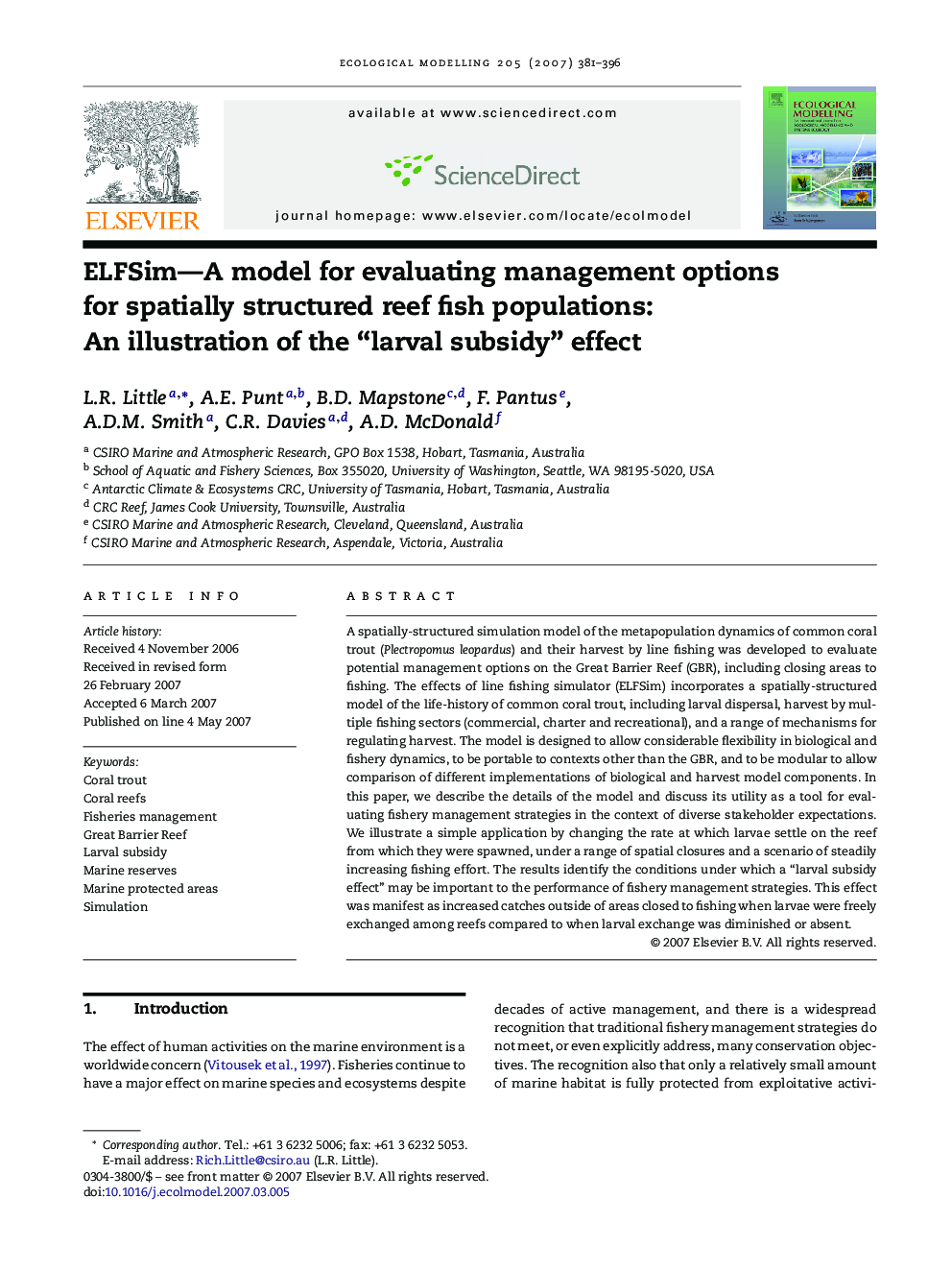| Article ID | Journal | Published Year | Pages | File Type |
|---|---|---|---|---|
| 4378758 | Ecological Modelling | 2007 | 16 Pages |
A spatially-structured simulation model of the metapopulation dynamics of common coral trout (Plectropomus leopardus) and their harvest by line fishing was developed to evaluate potential management options on the Great Barrier Reef (GBR), including closing areas to fishing. The effects of line fishing simulator (ELFSim) incorporates a spatially-structured model of the life-history of common coral trout, including larval dispersal, harvest by multiple fishing sectors (commercial, charter and recreational), and a range of mechanisms for regulating harvest. The model is designed to allow considerable flexibility in biological and fishery dynamics, to be portable to contexts other than the GBR, and to be modular to allow comparison of different implementations of biological and harvest model components. In this paper, we describe the details of the model and discuss its utility as a tool for evaluating fishery management strategies in the context of diverse stakeholder expectations. We illustrate a simple application by changing the rate at which larvae settle on the reef from which they were spawned, under a range of spatial closures and a scenario of steadily increasing fishing effort. The results identify the conditions under which a “larval subsidy effect” may be important to the performance of fishery management strategies. This effect was manifest as increased catches outside of areas closed to fishing when larvae were freely exchanged among reefs compared to when larval exchange was diminished or absent.
